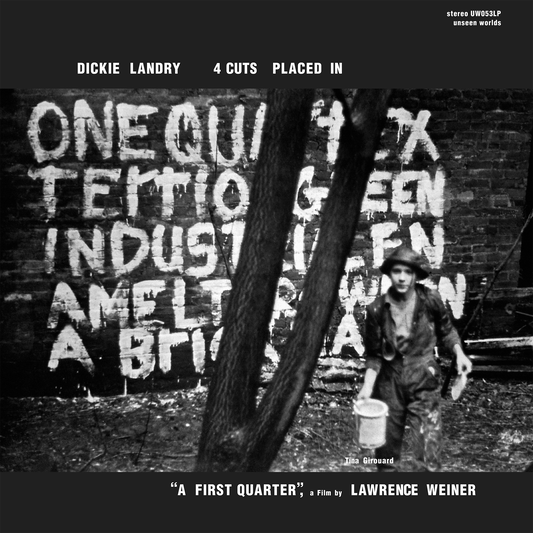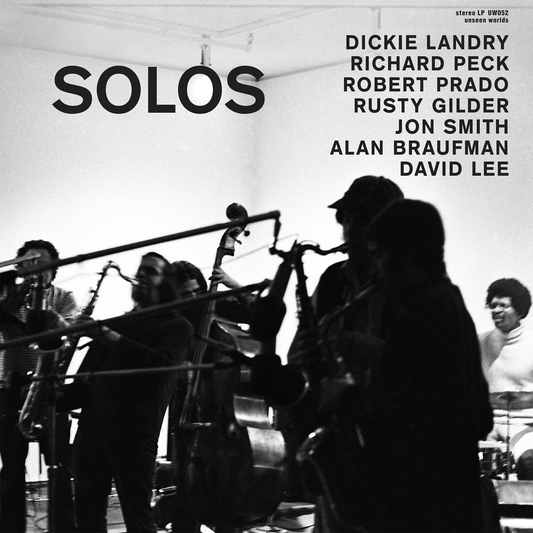(2) The piece may be fabricated.
(3) The piece need not be built. Each being equal and content with the intent of artist, the decision as to condition rests with the receiver on the occasion of receivership.
The work of Lawrence Weiner (b. 1942, The Bronx), a singular figure in American art for the better part of fifty-five years, has manifested in objects, films, installations, and instances across a variety of media since the early 1960s, when he first began making cratered sculptures and landscape interventions. Associated with conceptual art––a reductive term, like minimalism, that makes its divers practitioners bristle––Weiner’s work across a variety of media is rooted in the potentiality of language and meaning, the building blocks of each a palmful of unfixed material. However, if art is generated through ideas and can be made real by anyone in the position to actualize it, its message should be dispersed outside the traditional art market and its class politics. Moving image, publications, and recordings therefore quickly emerged as a way for Weiner to get his work into the hands, eyes, ears, and minds of those dedicated to the malleable experience of perceptual facts.
The 1970s saw Weiner’s methods and ideas distributed via a number of cassettes and vinyl albums, most of which were released through galleries like Yvon Lambert or institutions like the Van Abbe Museum Eindhoven (Weiner split his time between the Netherlands and New York). Throughout the decade he developed working relationships with a cross-section of experimental musicians, including composers Ned Sublette (b. 1951, Lubbock) and Peter Gordon (b. 1951, New York), reedist/audio engineer Marzette Watts (1938-1998, Birmingham, Alabama), and reedist Dickie Landry (b. 1938, Cecilia, Louisiana). Landry and Weiner first collaborated in 1972 through connections with Leo Castelli and Keith Sonnier, resulting in the short video works To and Fro. Fro and To. And To and Fro. And Fro and To (1972) and Shifted from the Side (1972), as well as the 85-minute A First Quarter (1973) and an LP under Landry’s name, 4 Cuts Placed In “A First Quarter,” A Film by Lawrence Weiner (Chatham Square LP 10). In 1978 Having Been Built on Sand With Another Base (Basis) In Fact was conceived as a vinyl edition and released by the Rüdiger Schöttle gallery in Munich with sleeve design by Weiner. The piece consists of eight untitled tracks, four to a side. Weiner, Tina Girouard (a performance artist and Landry’s partner at the time), and Britta Le Va (a German photographer then married to American artist Barry Le Va) recite text with Landry’s woodwinds, all recorded in the natural reverb of Rauschenberg’s studio, a former mission and chapel in Lower Manhattan.
The conceit of this record is relatively simple, layering Girouard in English, Le Va in German, and Weiner in English and German. Blocks of related or physically proximal texts repeat, invert, and intersect with Landry’s music as a constant. Weiner notes that he “took German folk songs [as a root], and Britta Le Va comes from Berlin. It always absolutely intrigued me, as she didn’t say [speaks in German] the phrase ‘auf sand gebaut,’ which is real Rhineisch, from Rhineland. It made a lot of sense because it was not that she said ‘built out of sand’ but that it was ‘built and built with sand,’ which is a very different construction.” Thus, the layers of text and sound have meanings that fluctuate in complexity and scope, and like much of Weiner’s work, beyond mere facts. On the subject of the recording’s circumstances, the artist recalls that “we went into Bob [Rauschenberg]’s studio and set it up, and what Dickie did was he hung the microphones off the ceiling, quite high as it’s a five-story building, and we walked through the room as he was playing instruments, putting them down and picking them up. It was really fine.”
As an LP, Having Been Built… is a very present recording. Its grooves give off the heat of woodwinds, making real the distance between individuals, microphones, and the enunciation of words caught in architecture and on tape. On the sixth song, a fire truck is audible advancing and receding, but the recording equipment continues to roll and the take is not remade––as an event, the sounds’ circumstance is crucial. Occasionally vocals or instruments distort, landing a little bit in the red, which adds liveness to the performance even if it was not publicly observed. The first piece is a trio for Landry’s keening tenor, repeating winnowed but breathy lines that contrast with and buoy Le Va’s clear, husky phrases, building in intensity as Weiner, in English, offers statements that are caught just off mic, buried but peeking through. The third cut adds Girouard, and one can hear woven parallels in the two women’s voices, cadences, and pitches, with Weiner’s cutting inflection dancing amid them. Landry’s bass clarinet is rich in its warble, full and gentle with woody footfalls that demarcate shapes through the chorus. Vocal rhythmic cycles, wordless in nature, are the energy that courses through the fourth song, urgent and sweaty as Weiner recites statements of political position in the Middle Ages, Le Va declaiming alongside in German. On soprano saxophone for the fifth tune, Landry pierces and darts in a bright manner in a private dialogue with himself, echoing Steve Lacy as female voices nearly bury one another in closely valued hues. Weiner, meanwhile, volleys between the LP’s title phrase and cornerstone proclamations such as “the artist may construct the piece. The piece may be fabricated. The piece need not be built.” The closing cut makes curious use of delay and alto flute, Landry’s breath and the inherent percussiveness of the instrument’s keys creating a slick rhythmic support that courses through overlapping vocal phrases, advancing and receding declarations of presence and intent.
As documents and situations, Having Been Built On Sand With Another Base (Basis) In Fact and earlier works like A First Quarter are not altogether that different. In Having Been Built… the dynamics of actors on screen are replaced by sound and space and one has to listen closely for the nuanced liveliness of the readings. While an object such as an LP, a film, or a publication has somewhat greater distribution than inside a museum or gallery setting, the number of people who may have access to the work is relatively limited. As both Landry and Weiner have expanded their reach from these 1970s snapshots, it is valuable to be able to bear witness to their intersections in such a fertile artistic period. As Weiner recognizes, “I didn’t have any problems at the time but we also didn’t have a large audience. There was less kvetching and complaining; I don’t come from the established art thing or the university structure, so we didn’t have to argue with that. If one became famous they would just accept you and if not they would reject you. Let’s be honest about all this––[the work] happened because people were then much more open-minded and generous than we are used to.” One must have hope that such generosity remains in the world, and that creatively it can still be a part of how art might occur.
Clifford Allen
Brooklyn, NY
March 2021
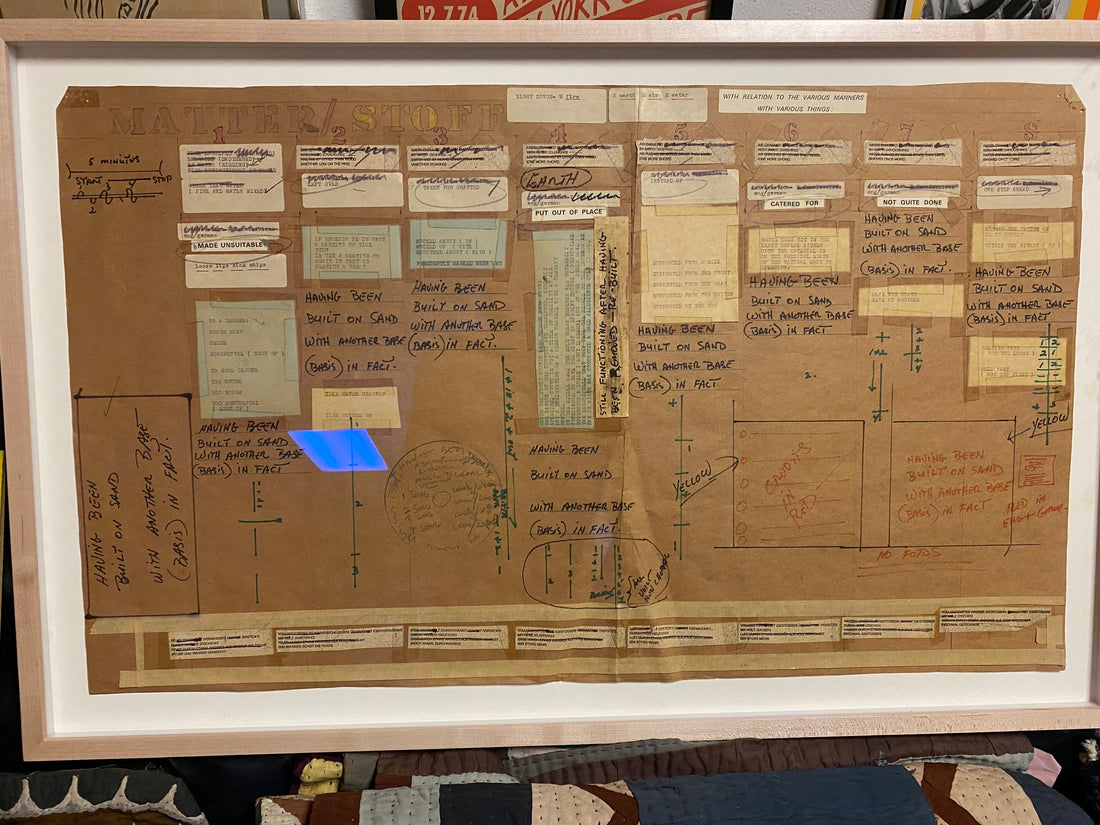
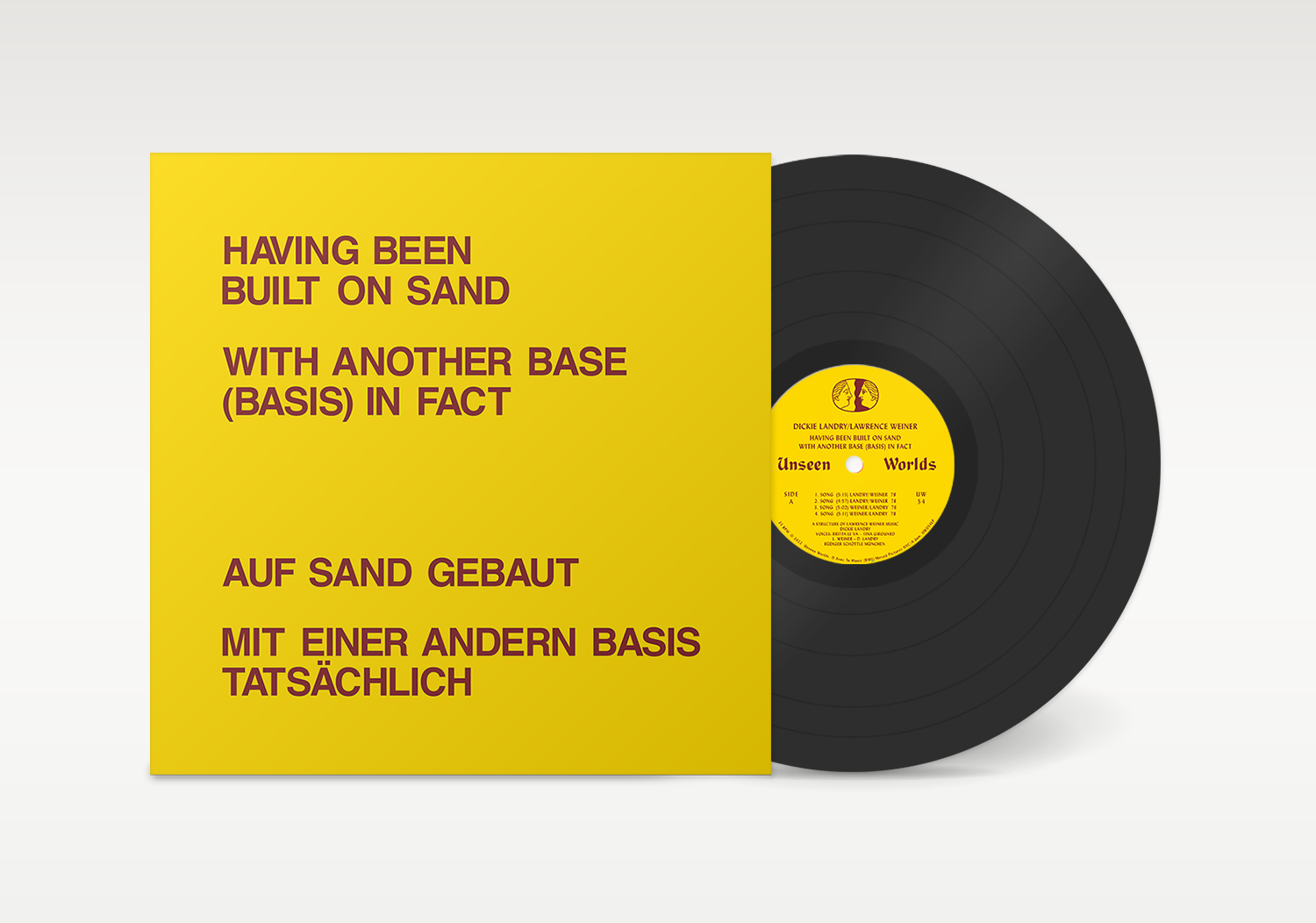
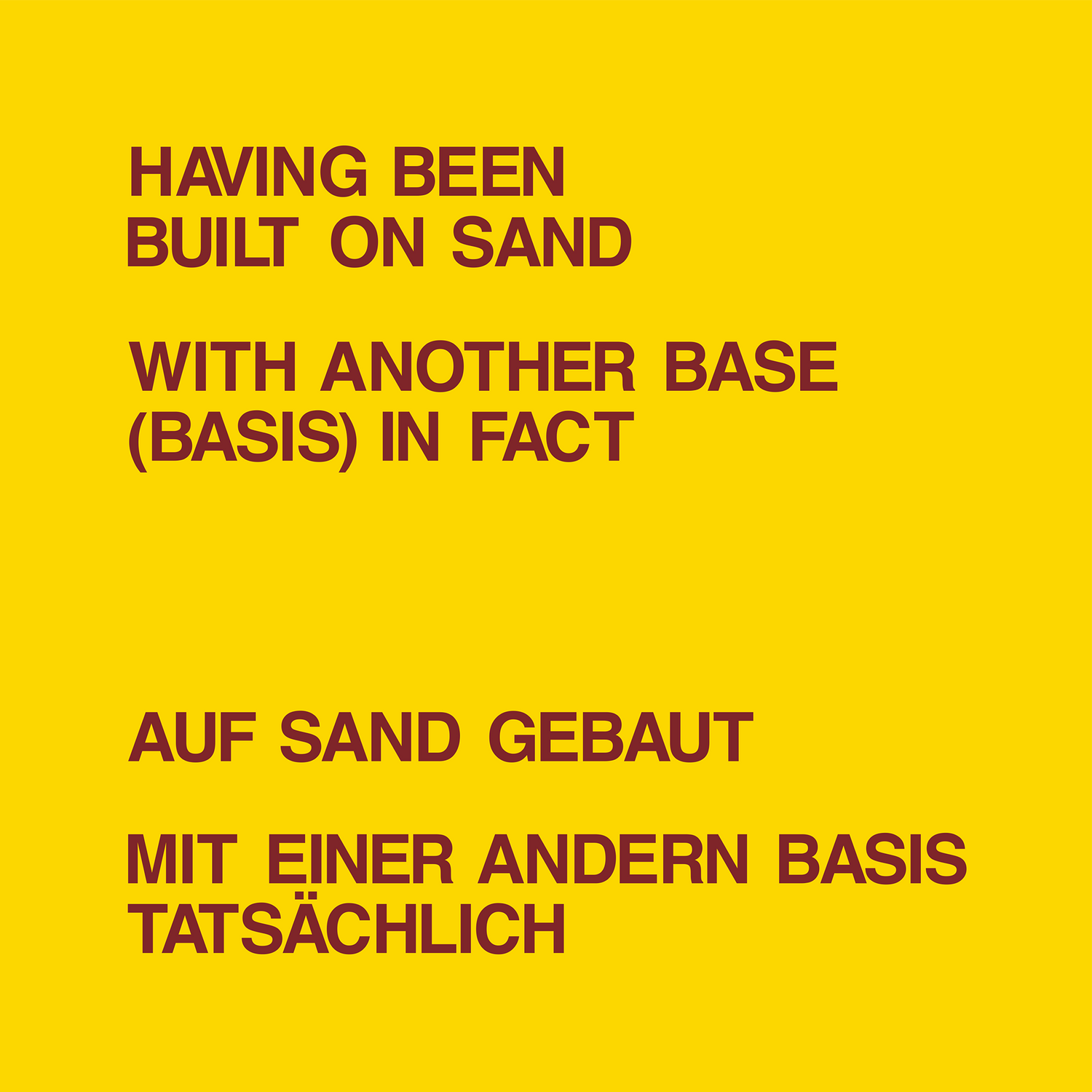
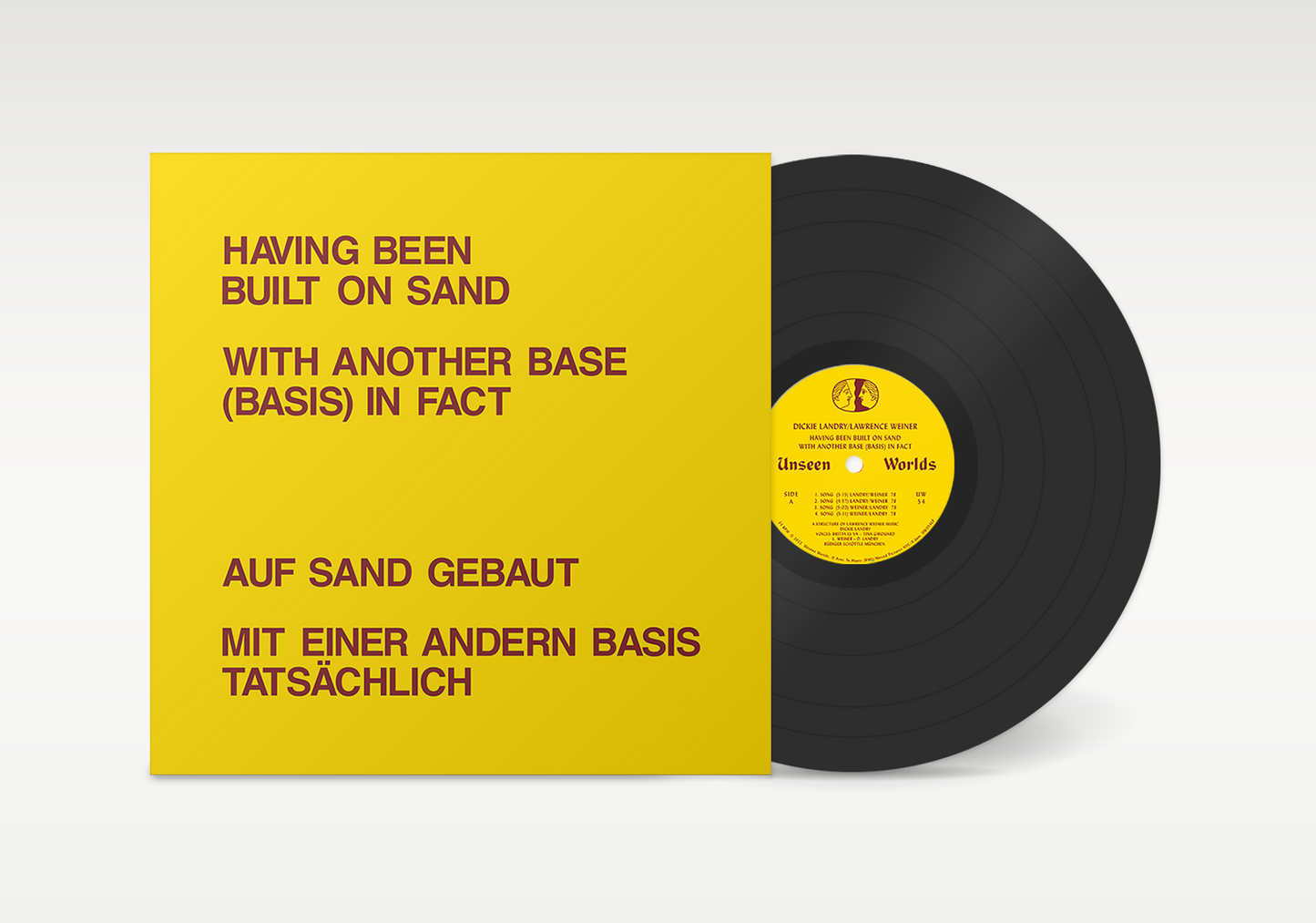
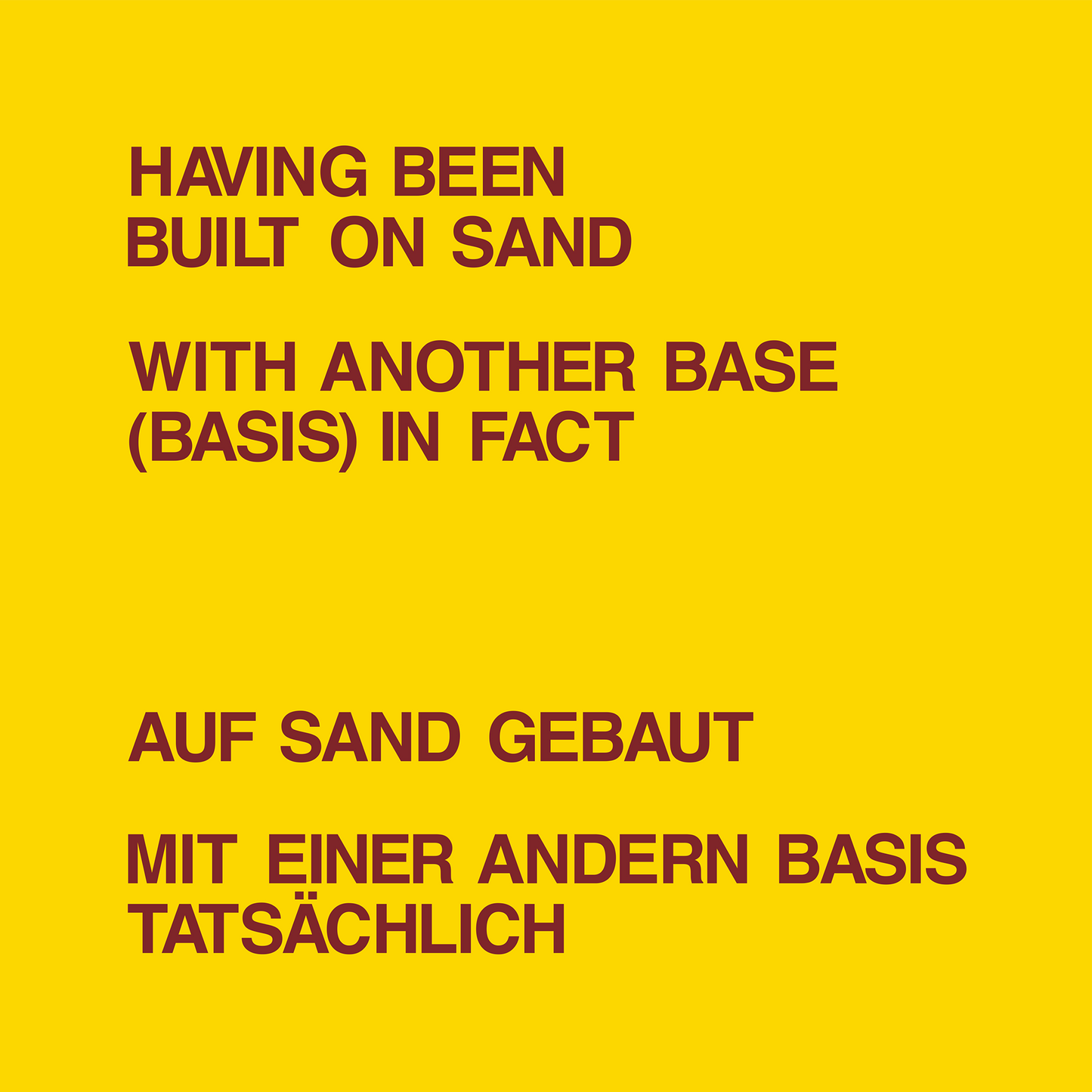
![[product title] - unseen worlds](http://unseenworlds.com/cdn/shop/products/UW06CoverHiRes_533x.jpg?v=1566370081)
